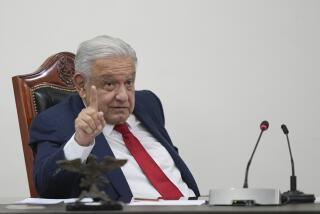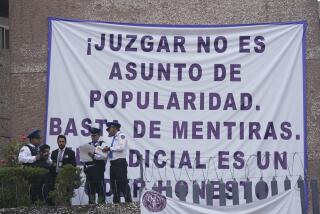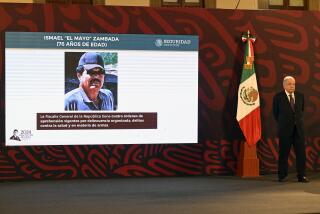U.S., Mexican officials give different accounts of immigration deal that averted tariffs

U.S. and Mexican officials sought Monday to bat down criticism of the last-minute agreement they reached on immigration and tariffs, each playing to their domestic audiences with contrasting and, at times, inflated claims.
Secretary of State Michael R. Pompeo said the Trump administration had won the most significant concessions ever from a Mexican government to reduce the flow of migrants from Central America.
The agreement, which was signed Friday night, will “make a fundamental difference in the calculus for those deciding to transit Mexico to try to get into the United States,” Pompeo told reporters at the State Department.
As evidence, Pompeo largely cited steps that Mexico has already taken, or had planned to take, long before last week’s negotiations.
President Trump hinted at secret side deals that would show his administration had won even bigger gains from Mexico, tweeting that it would be “revealed in the not too distant future.”
He warned that if the Mexican Congress doesn’t approve the deal, “Tariffs will be reinstated!”
But Mexico’s foreign minister, Marcelo Ebrard, who was Pompeo’s negotiating partner for three days of intense talks at the White House and State Department, said there were no secret deals.
At a news conference in Mexico City, Ebrard said the two sides had agreed to assess in coming weeks whether Mexico had succeeded in reducing the number of asylum applicants and other immigrants entering the United States.
Ebrard said the review would come in 45 days, while the State Department gave a 90-day deadline. The discrepancy could not be immediately reconciled.
If the surge of refugees has not abated by then, Ebrard said, the two governments would discuss other ways to share the burden of asylum applicants. That could include increasing the number that Mexico takes back from the United States or looping in other countries.
“We think the distribution of responsibility on asylum should be regional,” Ebrard said.
He said the United Nations High Commissioner for Refugees should be involved, as well as Panama, Brazil and other countries that are often entry points to the Americas for people fleeing Africa and other parts of the world.
Ebrard described the negotiations in Washington as very difficult and tense, in contrast with Pompeo’s more effusive characterizations, and said U.S.-Mexican relations have hit their lowest point since President Andres Manuel Lopez Obrador took office on Dec. 1.
He reiterated that Mexican negotiators had successfully resisted a persistent Trump administration demand that Mexico be declared a “safe third country,” which would force refugees to apply for asylum in Mexico without traveling to the U.S.
“They wanted us to sign something totally different,” Ebrard said.
Pompeo hailed Mexico’s pledge to deploy 6,000 National Guard personnel to its southern border with Guatemala. At this point, the National Guard has not been formed, while Mexican federal troops have long been stationed, in larger and smaller forces over the years, near the border.
Pompeo also said the U.S. return of asylum seekers to Mexico to await the resolution of their claims would hit “full throttle.” The controversial practice, known as “Remain in Mexico,” started last year and has been challenged in court.
“The deal continues the Trump administration’s commitment — the strongest by any administration in history — to confront the tide of illegal immigration and many other problems along our southern border, including the drug trafficking issues that transit there,” Pompeo said.
Pompeo was vague about what metrics the Trump administration would use to measure success or failure in the steps Mexico takes. Other administration officials have said success will be judged on how many migrants show up at the U.S. border. Those figures typically go down during the hot summer months.
“We will evaluate this literally daily,” Pompeo said.
Trump had threatened to slap a 5% tariff on all imports from Mexico starting Monday and escalating steadily to 25% by October. Economists, business leaders and lawmakers on both sides of the border warned of a costly trade war that would hurt both nations’ economies, and Trump indefinitely suspended the tariffs on Friday as part of the deal.
For more on international affairs, follow @TracyKWilkinson on Twitter
More to Read
Sign up for Essential California
The most important California stories and recommendations in your inbox every morning.
You may occasionally receive promotional content from the Los Angeles Times.











